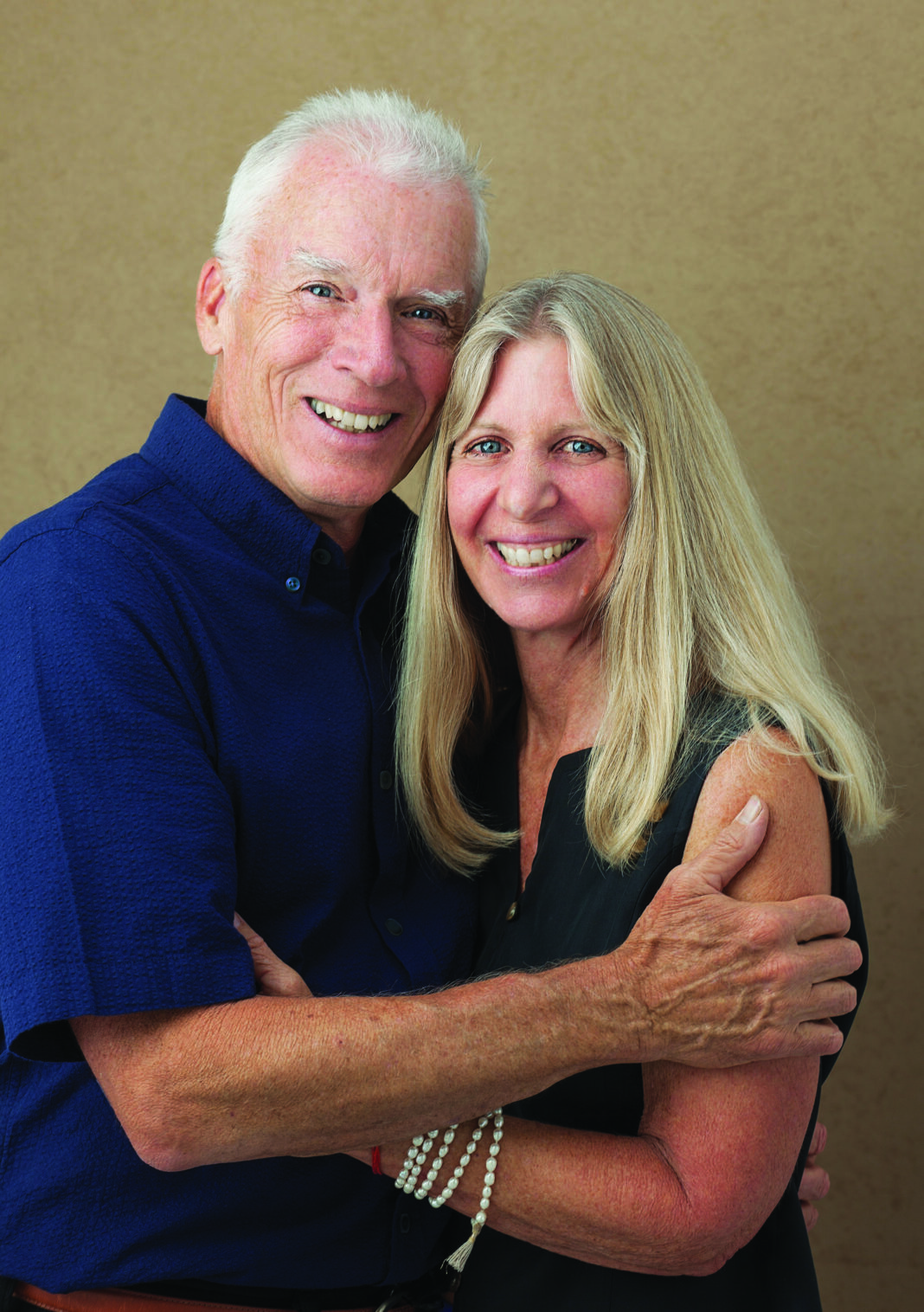Around Valentine’s Day, when everyone rushes to purchase love tokens and reserve tables for two, it’s easy to forget that relationships are, in essence, hard work. Who wants to work hard in the age of the smartphone and the dating app? Good question. Fairfax-based couple’s therapist George Taylor wrote a book that’s meant to streamline the hard work and provide some workable exercises—the self-published A Path for Couples: Ten Practices for Love and Joy.
With more than 20 years of counseling experience, Taylor brings his own personal expertise to the book as well; together with wife and fellow therapist Debra Chamberlin-Taylor, he teaches a recurring Spirit Rock Meditation Center workshop called Heart Practices for Couples (the next one is coming up on Saturday, February 17).
Chamberlin-Taylor herself is a longtime meditation educator at Spirit Rock, teaching chanting, Qigong and Awakening Joy workshops, among other things. In the book, some of the workshop’s practices are expanded with 10 techniques that couples can implement to unlock better communication. Chapters include promising titles like Creativity, Collaboration and Joy, and Working with Intentions—Creating A Vision.
Before becoming a therapist, Taylor was a college teacher, and his passion for educating the community is evident in the book. “I was interested in education, and started thinking about the book after 10 years of running meditation and relationship workshops for couples,” he says. “There’s a big leap between exercises and a book—the book came out of the mission to teach couples how to be more loving, which naturally spills over to their children and extended family; it’s very gratifying.”
While the path for couples is his passion, having worked in publishing before, Taylor was disenchanted with the classic path to publishing. “I found it somewhat of a cold world,” he admits. “I’m a community person and believe the book will break out of the community—that’s the way I work.”
Indeed, in December a Kindle version followed the printed edition, ranking high among readers. In it, usefulness and practicality are key. “I wanted to create a book that’s workable, and the practices are meant to be done more than once,” Taylor says. “The point is, people actually can embody the quality of love. When we ask at our workshops how many people think they could be more loving, more generous, people say ‘Yes, sure,’ and what better place than in your family?”
Having said that, Taylor is well aware of the many challenges and tribulations that couples in long-term relationships face. The most boring challenge, and perhaps the most devastating one, is of course boredom itself.
“There’s a cultural challenge,” Taylor says. “There’s a cultural myth that as relationships mature, they become less exciting, and that’s the only thing that can happen to romance. Indeed, couples can be careful about topics they discuss, and this carefulness lowers the vitality of the relationship, and it’s true that if couples don’t work on themselves, there can be a degree of productivity, friendliness, parenting, but not love.”
But, says Taylor, it doesn’t have to happen. “It takes attention to your communication patterns, the quality of your communications; it’s a work of art and discipline to preserve the loving quality.”
Another challenge? The ever-present stress level. “I’m old enough to see the incredible weight and burden of productivity on couples these days. There’s a fanatic pace in relationships, a great intensity at work, and people are used to disconnected lives while not realizing how it affects them.”
Disconnected, as in talking about what really matters, in an open way. “People can be really good at remodeling together, so they think everything’s OK in the relationship, as productivity is prioritized,” Taylor says. “But they don’t connect to the depth of love and the joyful feelings that stream from that.”
Enter the book, which teaches couples how to really talk, broach touchy topics and see each other beyond the computer and iPhone screens. Seeing clients from the affluent population of Marin County, does Taylor think that money matters when in comes to love? “It would be obvious that money concerns and beliefs are probably in the top five or 10 in relationships,” he says, “and what I noticed is that people get stuck in their money beliefs and that’s even more hurtful than the amount of money they actually have.”
Getting “stuck” over and over again is, in general, what Taylor perceives as a major problem for couples who can’t get beyond their “patterns.” The idea is hardly revolutionary, and he’ll be the first to admit that. “Most of us get into very specific patterns—attacking and defending, or pursuing and withdrawing,” he says. “It’s a pattern epidemic, and until you realize something about those patterns, you won’t be able to stop them repeating themselves. With money, for example, couples often use it as a test. Someone says something and the other person responds, and people get stuck because they can’t examine themselves, so they keep saying the same thing—these conversations are repetitive.”
The way out? Awareness, first and foremost. “It takes two people to create these patterns, and most arguments are about what the other person did wrong,” says Taylor, who oftentimes teaches that hard-to-get component to 150 to 200 students at a time. “You have to begin asking yourself, ‘How have I started to create these stressful patterns, what did I learn from my parents, my other relationships?’ The final pattern is self-disclosure—self-disclosing authentic feelings about ourselves. Most of us received pretty bad training in exposing these kinds of things.” Accordingly, Taylor mostly sees couples in their mid-to-late 30s, as this is when people start noticing their patterns.
The fact that Taylor has been married for 36 years is not a bad selling point for such couples, both when it comes to the book and when workshops are to be taken.
“My wife, Debra, and I have been followers of this path for 35 years,” writes Taylor upon advertising the upcoming workshop. “We were young when we met, and like many of you, we needed help to survive and to thrive in our relationship. We immediately became more aware of our own reactions and patterns. Knowing we needed to change these painful habits, we followed our teachers’ instructions, and we adapted their wisdom to our own needs. We have done practices like the ones in my book hundreds of times.”
In real life, having to discuss their teaching and practices is “not without challenges,” he notes. “But there’s something iconic in being at Spirit Rock together, and being married longer than most couples under the moon. We’re having a good time.”
Read more about the book at pathforcouples.com; read more about the upcoming workshop at spiritrock.org.










